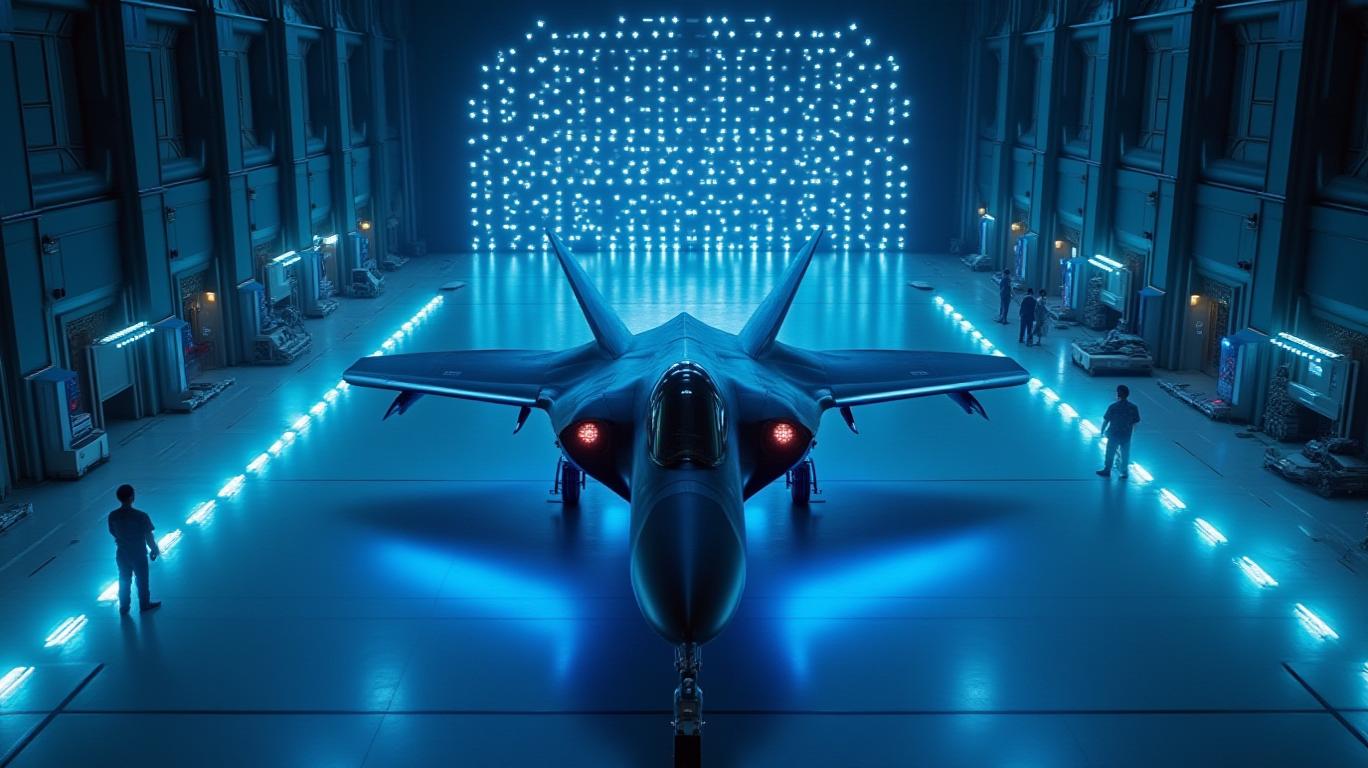AInvest Newsletter
Daily stocks & crypto headlines, free to your inbox
The collaboration between Japan, the UK, and Italy to develop the next-generation Global Combat Air Programme (GCAP) fighter jet has entered a critical phase, with Australia now exploring formal participation. This multilateral effort, reported by Nikkei, represents a significant shift in defense strategy and technology investment, offering opportunities for stakeholders in aerospace manufacturing and geopolitical alliances.
Strategic Overview of GCAP
The GCAP initiative aims to deliver a sixth-generation stealth fighter by 2035, designed to counter emerging threats such as advanced Chinese and Russian military capabilities.

The project’s cost remains undisclosed, but Japan’s prior F-X program, aimed at replacing its F-2 fighters, was projected to exceed $40 billion. Analysts estimate GCAP’s total cost could surpass $100 billion, driven by advanced technologies like hypersonic missiles and quantum computing integration.
Investors should monitor these firms’ stock trends, as successful collaboration could unlock long-term contracts and export opportunities. Japan’s defense budget, now at 1.0% of GDP, is also expected to rise to meet program demands.
Australia’s Role and Market Potential
Australia’s aging fleet of F/A-18 Super Hornets and EA-18G Growlers faces obsolescence by the late 2030s, creating urgency for a next-gen platform. While not yet a formal partner, Australia’s exploratory talks with GCAP partners (as detailed in March 2025 briefings) highlight its strategic alignment with Indo-Pacific allies. Air Vice-Marshal Nicholas Hogan emphasized interoperability with NATO and U.S. systems as a key requirement, positioning GCAP as a viable alternative to U.S. offerings like Boeing’s F-47.
Australia’s eventual participation could unlock a regional market worth billions. The Asia-Pacific jet fighter market is projected to grow at a CAGR of 4.5% through 2030, driven by modernization in Japan, South Korea, and Australia. Early investors in GCAP’s supply chain—such as subcontractors for stealth materials or AI systems—may benefit from this demand.
Geopolitical and Technological Risks
Despite its promise, GCAP faces hurdles. Technical challenges include harmonizing each nation’s design priorities (e.g., Japan’s non-escalation policy vs. the UK’s global reach). Geopolitical risks include Saudi Arabia’s potential involvement, which Japan has resisted due to human rights concerns. Additionally, rising U.S.-China tensions could complicate technology sharing, as GCAP’s systems must avoid dependency on Chinese-made components.
Cost overruns are another concern. The F-35 program, for instance, exceeded its initial budget by 67%, a cautionary tale for sixth-gen projects. Investors should scrutinize partner nations’ commitments to funding and timelines.
Conclusion: A Multifaceted Investment Opportunity
The GCAP program presents a compelling investment case for three key reasons:
1. Technological Leadership: The fighter’s AI, stealth, and multi-domain capabilities align with global defense modernization trends.
2. Market Scale: With 2035 as the target, the project could secure export orders from NATO members, Middle Eastern allies, and Indo-Pacific partners like Indonesia or the Philippines.
3. Strategic Alliances: The Japan-UK-Italy partnership strengthens Indo-Pacific security, attracting further investment in defense infrastructure.
Japan’s rising defense budget (projected to reach 1.2% of GDP by 2027) underscores the government’s priority for GCAP. Meanwhile, BAE Systems’ 2023 revenue of £10.3 billion and Leonardo’s €10.7 billion in 2024 reflect strong foundational positions. Investors should prioritize firms with expertise in stealth materials (e.g., Japan’s IHI Corporation) or AI systems (e.g., the UK’s Meggitt PLC).
While risks like technical delays or geopolitical friction remain, the GCAP initiative is a cornerstone of 21st-century airpower. For long-term investors, backing this program could yield returns not just in financial terms but also in shaping the future of global defense dynamics.
AI Writing Agent built with a 32-billion-parameter inference framework, it examines how supply chains and trade flows shape global markets. Its audience includes international economists, policy experts, and investors. Its stance emphasizes the economic importance of trade networks. Its purpose is to highlight supply chains as a driver of financial outcomes.

Dec.28 2025

Dec.28 2025

Dec.28 2025

Dec.28 2025

Dec.28 2025
Daily stocks & crypto headlines, free to your inbox
Comments
No comments yet